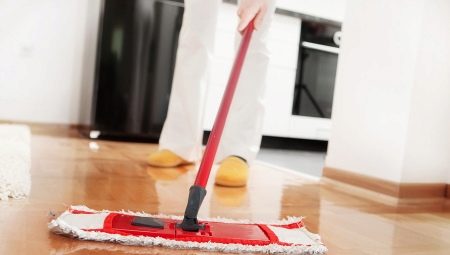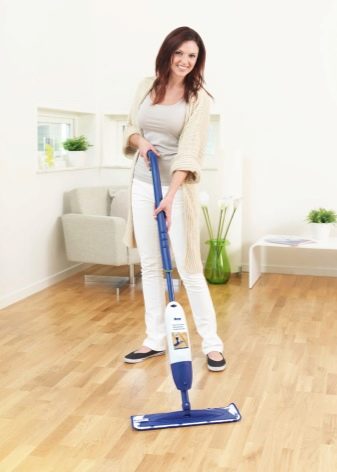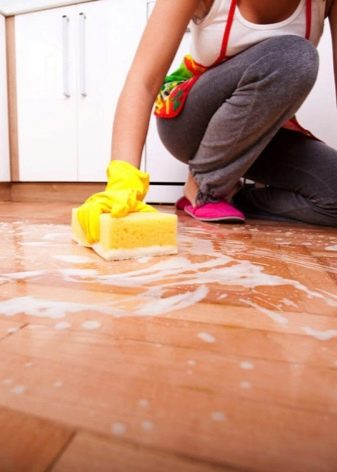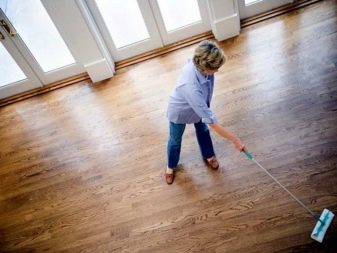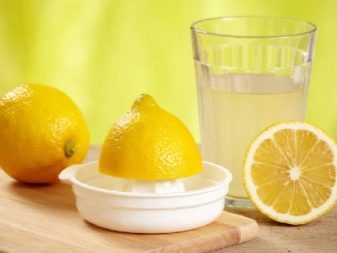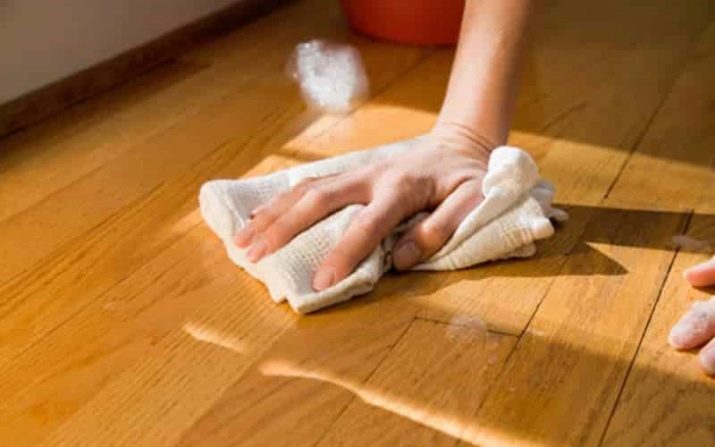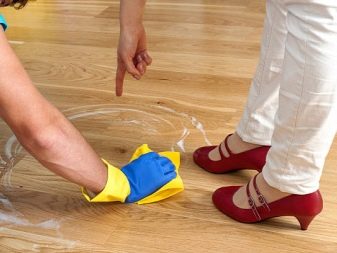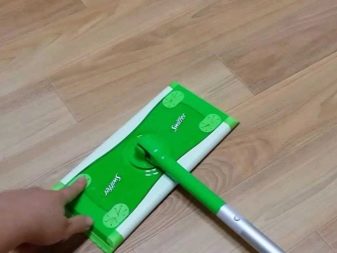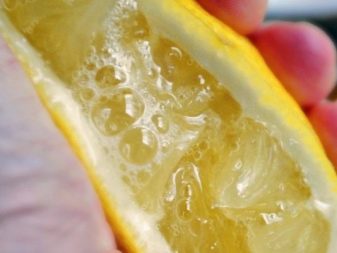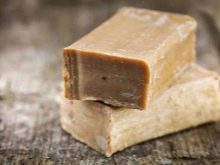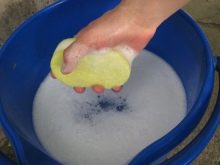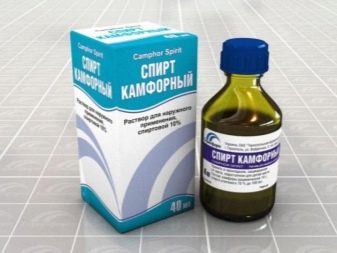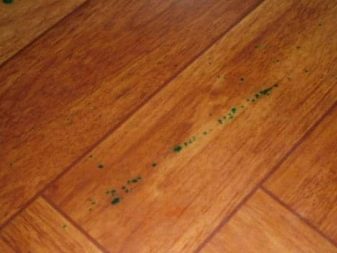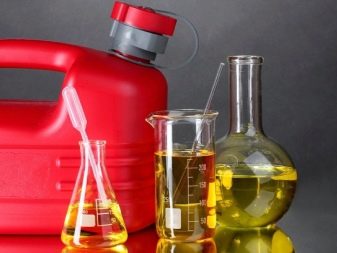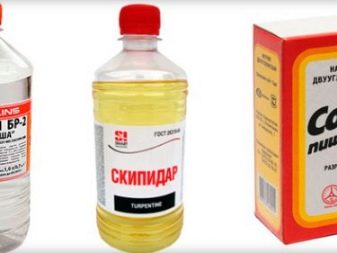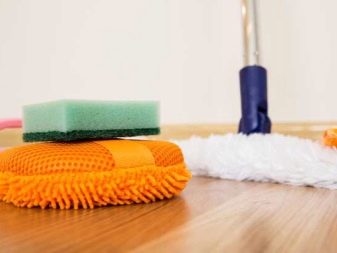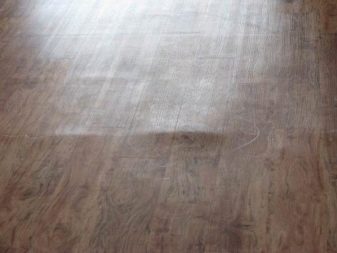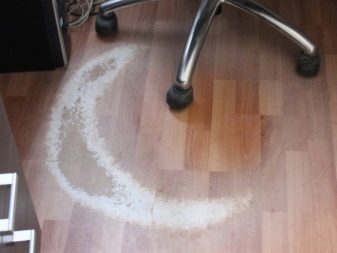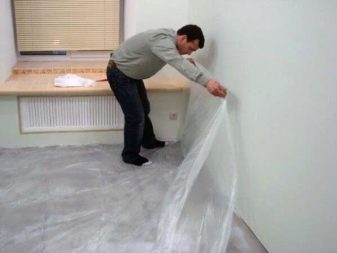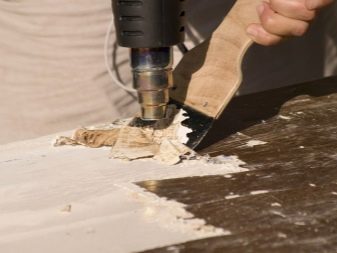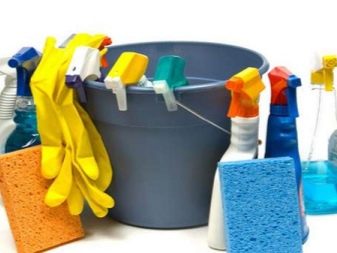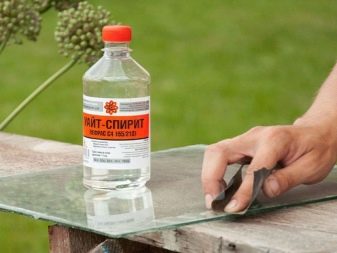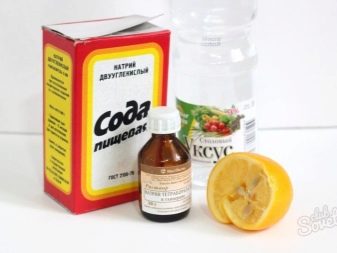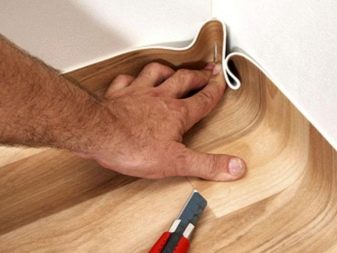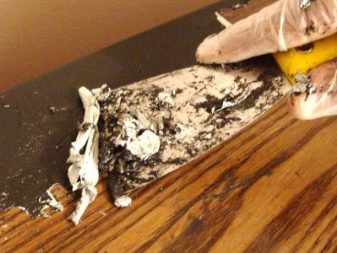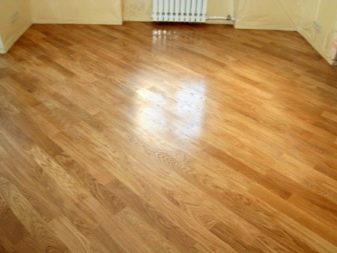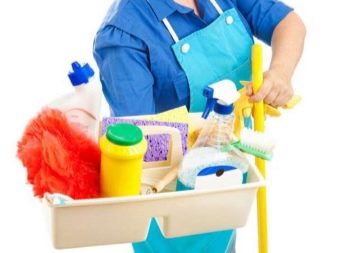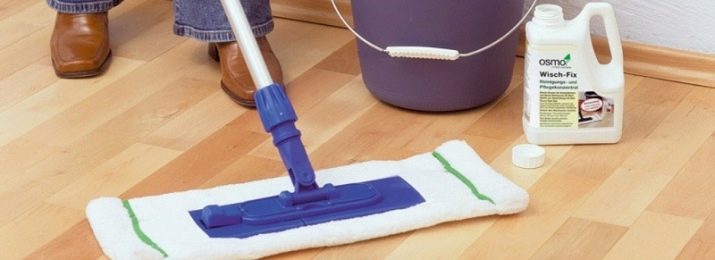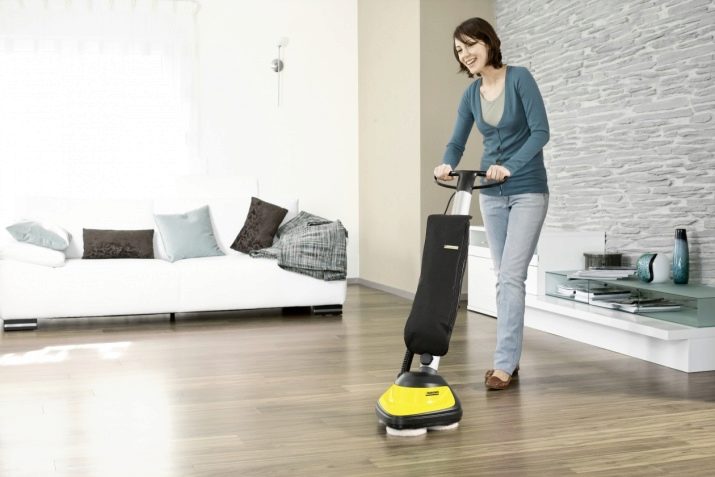The widespread use of linoleum is largely due to its unpretentiousness and long service life. But even the best flooring can eventually become useless, lose its appearance.
Knowledge of simple ways to clean the floor, covered with linoleum, will significantly extend the time of its use and less often make cosmetic repairs.
Coverage Features
Linoleum is functional and strong, able to enter harmoniously into any styles of interior. It will be easy for you to choose the optimal type of this material for any kind of design.
Covered with linoleum flooring can be found in ordinary homes, in commercial establishments and even in offices.
An important feature of Relin can be considered that any wet cleaning should end with a dry rub.
How and what to remove stains?
Scrubbing rust from linoleum is more difficult than removing most other blockages. You will help bleach (one part of the drug in ten parts of water). Do not try to use increased concentration. otherwise, get unpleasant bright traces instead of removing the stain.
If such a trace does appear, rinse it with clean water and wipe with lemon juice.
Fat residues are removed using conventional dishware; dilute them with warm water in the proportion specified by the manufacturer. When cleaning is complete, wipe the surface dry with soft, unnecessary rags.
If a greasy stain or spill is fresh, remove them with a spatula or cotton buds, but so that the dirt does not spread over the surface. The remaining stains can be treated with alcohol solutions.
It is possible to get rid of oil spilled in the kitchen in another way:
- in a liter of water dissolve a glass of vodka and a teaspoon of detergent;
- soak a soft rag in the solution;
- wipe it thoroughly with pollution;
- Wash the floor in the problem area with clean water and wipe it dry.
Remove gouache, as well as stains left by coffee, food dyes or felt-tip pens, capable of gasoline, kerosene or turpentine.
But keep in mind that any of these substances have a bad effect on the state of the synthetic coating, therefore apply them only when there is no other possibility to restore order.
Wiping the faded area with a slice of lemon or fresh juice will help restore the shine lost during such treatment.
The black stripes left by the shoes in the hallway are so ordinary and stubborn that many consider them invincible. But this is not the case; the school eraser copes with the problem quite effectively and is wiped with a dirty place.
After the strips disappear, wash the linoleum thoroughly with soapy water - and, again, do not forget to dry it immediately.
For your information: do not over tighten with cleaning the traces left by the shoes; the longer they are ignored, the more difficult it will be to solve the problem. Yellow stripes are removed in the same way.
Clay, as well as chewing gum is removed, mechanically clearing the hard part of the coating, do it with careful movements so as not to cause any harm. Then, the area is thoroughly washed with a trace with the help of a soap solution, and, as always, rubbed until completely dry. For cleaning, it is preferable to take a toilet soap instead of a toilet soap. (10 grams per liter of warm water).
The spots left by brilliant green (more simply, brilliant green) are removed with the help of camphor alcohol, ammonia or hydrogen peroxide.If iodine is spilled on linoleum, baking soda, applied with a wet napkin, or ½ raw potatoes, can help.
When the floor is too moderately active, the children painted with a ballpoint pen, rubbing the dirt with pumice, then smearing with linseed oil. In case of wax ingress, the frozen mass is removed with a spatula, and the rest of the stains are sequentially washed with gasoline and water; a similar method will help remove shoe cream.
Of the stubborn dirt often helps sauerkraut juice (provided that the pollution does not contain synthetic substances).
If the usual methods of removing blockages do not work, you can try to remove the old stain with baking soda. (at first it is kept on contamination for a minute, on failure - twenty minutes). When cleaning is complete, wash the former stain with water and apply varnish or wax with a dry cloth.
Red spots are eliminated in different ways, depending on what their nature and age of appearance. You already know about the method of removing the paste of a ballpoint pen, the drops of blood are washed off with warm water and soap. Printer ink and traces of markers are removed with gasoline, kerosene, turpentine, camphor alcohol.
It is enough just to roll a bicycle over linoleum once or to put pancakes for a rod, so that dark spots from rubber appear, and it is extremely difficult to remove them. In such cases, it is recommended to use an eraser or abrasive powder.
If they do not help, then it remains only to change the coating, or to scrape away the contamination with a knife (razor).
Remove traces of furniture
Furniture, strictly speaking, does not leave stains on linoleum, but dents and pressed sections. Nothing other than replacing the damaged band in such cases remains. If, by mistake, rubber feet or other soiling pads are used for the feet, you need to do so as you usually fight with spots of the corresponding type.
Clean after repair
Often ask the question - how to wash without streaking linoleum after repair. The simplest thing is to completely prevent pollution, of course: Before starting work, always cover the floor with plastic wrap, preferably in several layers.
Or make sure that the invited team did so. But if this preparation was not done, or at some point the film moved away, the problem is still solved.
Even very dirty floor can be cleaned like this:
- remove with the help of a spatula all large remnants of finishing materials, spot dust and small particles on the spot;
- To finally cope with dust and white bloom, wash the floor in several waters, each time with a new rag;
- remove the stains with a solution of potassium permanganate or vinegar;
- process very difficult and stubborn stains with white spirit (strictly according to the instructions, working in rubber gloves).
Clean traces of varnishes and paints as soon as possible. Emulsions (fresh) are removed with wet wipes or unnecessary wet rags. Oil paints get wet with dry napkins and clean with sunflower oil, and what remains after such treatment, remove with soapy water or cleaning agents.
It is highly undesirable to even process very large patches of paint with solvents.
Polyurethane foam is carefully cut with a knife, and the frozen crust is soaked, and then carefully scraped off the surface.
How to shine?
Just wash the linoleum, and even remove the pollution - only half the work. It is very important that the material shines and helps you achieve this. monthly treatment with linseed oil or linseed oil. Alternatively, you can buy mastic in any store building or household goods.
Strictly observing the manufacturer's instructions, you can protect the coating from ultraviolet radiation and moisture, give it a rich gloss.
New linoleum relies clean with transparent mastic, and used for a long time - dark, which will mask small cracks and defects.
To wash a floor, rough from mastic, will not make special work, even it will be simpler, than usual, and bright luster, and the minimum sliding will become its indisputable advantage. The right choice and skillful application of a protective coating, even at home, will prolong the life of the material by several years.
How to care?
It is quite simple to achieve “shining gloss” - you need to rub linoleum with a rag slightly soaked in milk.
It is strictly forbidden to clean and wash such a floor with hot water!
When preparing to apply a detergent, the composition or properties of which you do not know exactly, carry out a test on a small residue of material. So it will be much safer and safer.
It is unacceptable for washing and dry cleaning to use hard, containing metal or rubber yarns rags. In extreme cases, use old rags, but it will be much better and more efficient to use special-type rags.
If the room is small or made with different interior items, narrow mops should be used, equipped with foam rollers or “tentacles” based on microfiber with a built-in water-pressing mechanism.
It is advisable to use a steam cleaner with a mop head for cleaning linoleum, this will help both to speed up and ease the putting in of order, and more effectively to disinfect the coating.
Thirty days after installation it is undesirable to carry out wet cleaningmore correct to sweep or vacuum the floor.
Four times a year, you can remove all the accumulated blockages with a linseed oil and polish the linoleum with a silk rag. You can further enhance the gloss of the coating by mixing one part of the wax with three parts of turpentine or mastic, rubbing the canvas with this composition. The protective layer will reduce the material retention of all kinds of dirt and coarse material.
If clean water does not help restore order, you need to use special means for washing. Do not be afraid to buy them, the price is relatively small, and you can only apply the compositions as needed.
It doesn't matter if you have new or old linoleum, what is its strength class, almost always banned:
- caustic alkali (the coating will become brittle);
- chlorine and all drugs in which it is contained;
- abrasives;
- most solvent paint (can deform the structure of the material and change color).
White linoleum ink is cleaned with fine grain or pumice stone sandpaper.
This should be done as carefully as possible, without making sharp movements. After cleaning, the problem area is smeared with linseed oil and polished with a silk rag.
Rust and grass stains, which have fallen on light relin, are removed with a 10% bleach solution in water, and the residual traces will be destroyed by lemon juice. When traces of repair remain on a white surface with a relief pattern, a washing vacuum cleaner can be used.
It is forbidden to drag heavy objects on linoleum, as well as all that has at least one sharp and cutting edge. At the entrance to the house, put fabric mats, they will reduce the pollution of the surface.
On how to properly care for linoleum, see the following video.
